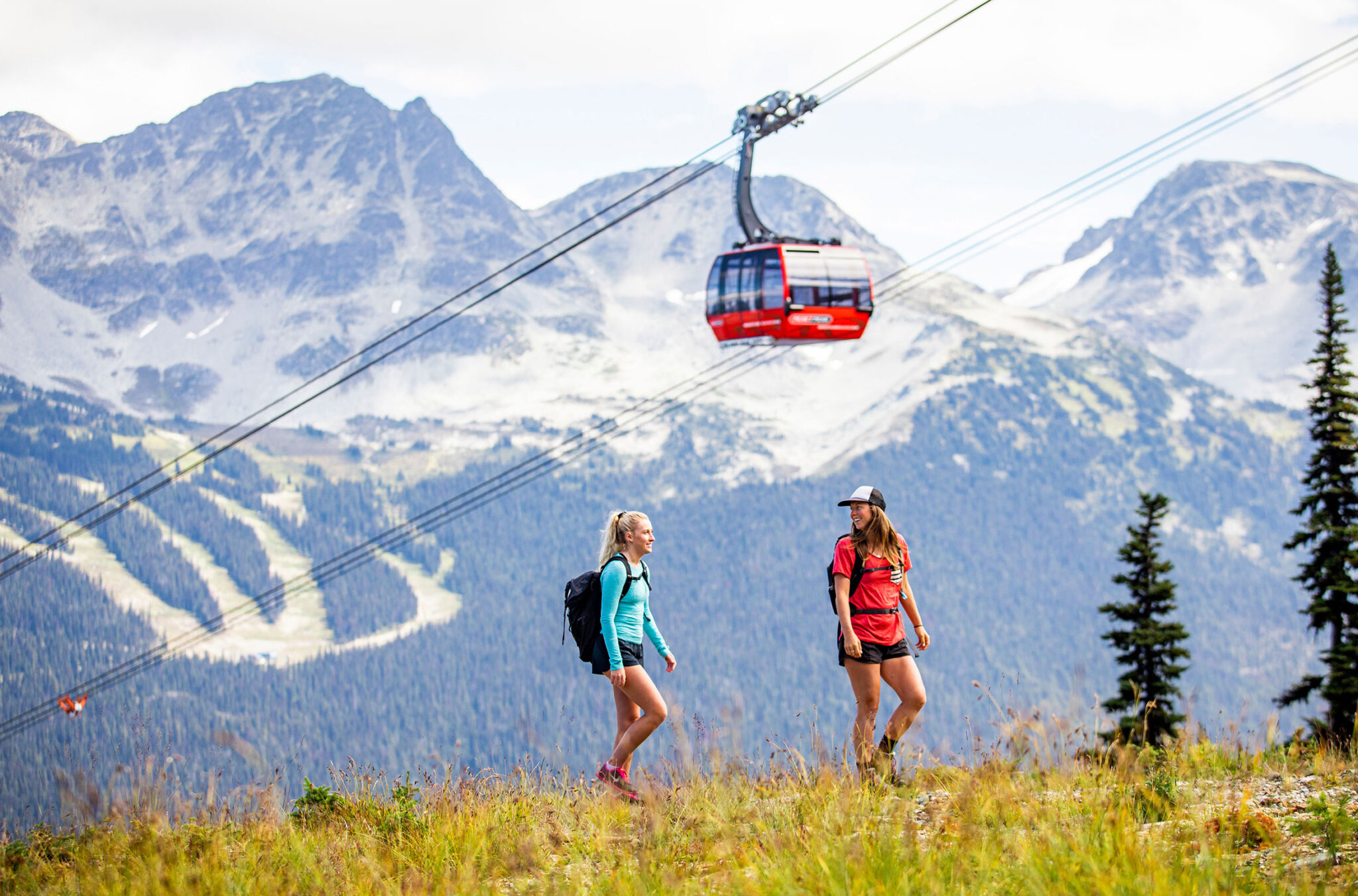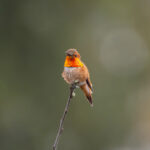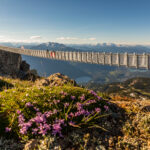Updated July 3, 2024
Hiking in Whistler is one of the main draws to the mountains in the summer months and the options are vast. From more casual, short options to challenging half-day hikes and sweat-inducing all-day options, there’s a hiking trail for you up here in Whistler.

Where to Hike in Whistler
Hiking on Whistler Blackcomb
Get into the wide-open spaces of Whistler’s alpine in under 25 minutes with a Summer Alpine Experience Ticket, which gives you access to the Blackcomb Gondola, located in Whistler’s Upper Village, the Whistler Village Gondola, the award-winning PEAK 2 PEAK Gondola and Peak Chair for the Cloudraker Skybridge and Raven’s Eye lookout experience. Tickets for the PEAK 2 PEAK do not sell out, so you can purchase them on arrival in Whistler at the Whistler Visitor Centre or Whistler Blackcomb Guest Relations.
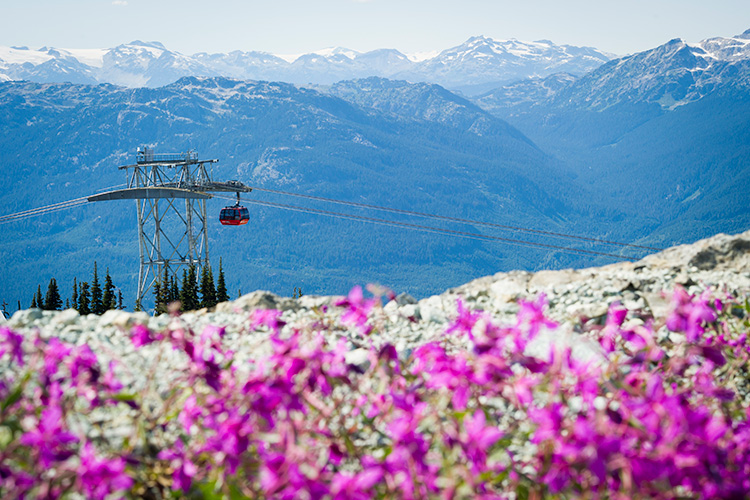
Many of these trails access alpine terrain, and opening dates for these trails vary year by year depending on snow coverage, so be sure to check which trails are open on Whistler Blackcomb before you go. The hikes on Whistler Blackcomb range from under an hour to full-day options. When you choose your route, it’s important to calculate the time it will take you so you don’t miss the last gondola download (it’s a long walk down).
Here are a few of my suggestions for hiking on Whistler Blackcomb.
Blackcomb Mountain Hikes
Alpine Loop (1.4 km / 30 minutes) > Overlord Trail (3.7 km / 60-80 minutes ) > Lakeside Loop (2.2 km / 40 minutes) > Marmot Trail (1.2 km / 40 minutes) > Decker Loop (3.3 km / 75 minutes)
Warm-up your hiking boots with the gentle and vista-filled Alpine Loop accessed straight from the Rendezvous Lodge on Blackcomb Mountain. If you’re a one-and-done kind of hiker, take it slow and soak it all in.
Those looking to push further should look out for signs to the Overlord Trail. This can be done as a there and back, but there are a few options to extend your hike and make it a loop. The first branch off the Overload Trail is Lakeside Bowl, accessed via the Lakeside Loop Trail. Popular with skiers in the winter, it makes for a stunning summer spot and is often full of wildflowers.
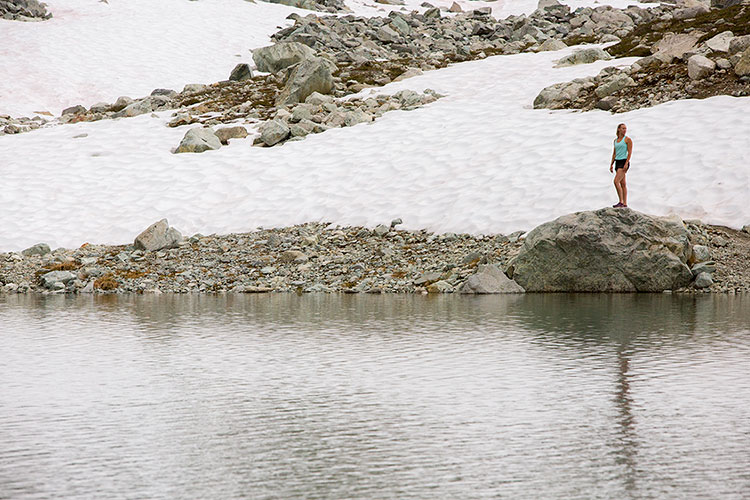
Back on the Overload Trail, you’ll enjoy glacial views above and the lush green depths of the Fitzsimons Valley below. Add a technical section and alpine lake (Decker Tarn) by adding on the Decker Loop Trail. This trail is rated as difficult, so careful footwork is required. Be sure to wear supportive shoes and bring trekking poles if you have them.
On the way back, you can return on either the Overload Trail and Alpine Loop, or the Marmot Trail and Southside Green Road that skirt the Glacier Creek Basin.
Hiking the Blackcomb Ascent Trails: Blackcomb Mountain
Made for the adventurous and physically prepared, the Ascent Trails start at the base of Blackcomb Mountain and deliver you to the top of the Blackcomb Gondola after some serious sweat equity (a 6.2-kilometre journey with 1,200 metres of elevation gain).
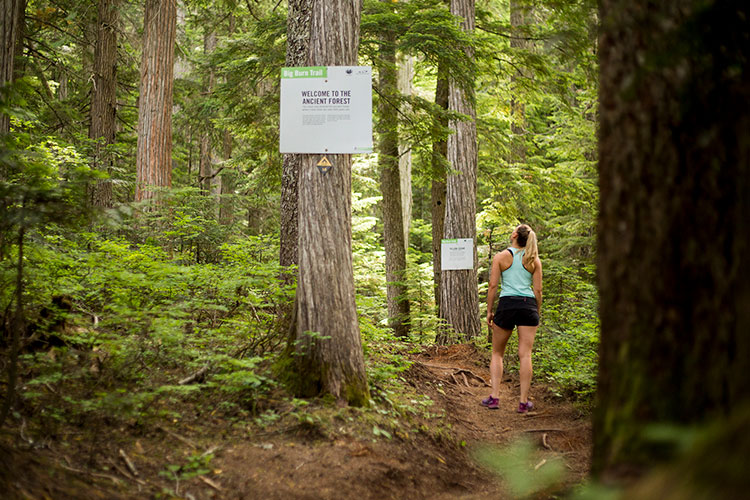
The trail is broken into three sections so there are options to do parts of the trail without committing to the whole hike. These are broken down into the aptly-named Little Burn (0.8 km / 30 minutes), Big Burn (2.2 km / 75 minutes) and Heart Burn (3.1 km / 1 hour, 45 minutes).
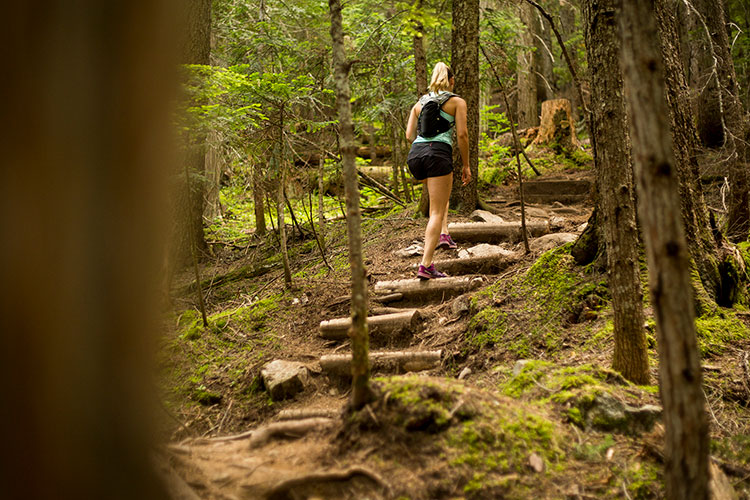
If you do Big Burn, you will end up at the Blackcomb Gondola mid-station and if you have a Summer Alpine Experience ticket or next winter’s season pass (2024/25), you can ride the gondola back down the mountain. You can also pre-purchase a $15 (all ages) Blackcomb Ascent Trail Midtsation Download Only Ticket, but you have to grab it ahead of time as they’re not available to buy at Midstation.
The entire Ascent Trail takes around three and a half hours one way, uphill, finishing at the top of the Blackcomb Gondola, next to the Rendezvous Lodge. Again, if you have a Summer Alpine Experience ticket or next winter’s season pass (2024/25), you can ride any gondola across or down. You can also pre-buy a Blackcomb Ascent 1-Day Trail Ticket for $45 (adult) which gives you access to any of the gondolas once you’ve reached the top (but you have to hike up).
The trail has excellent markers and educational signage about the local wildlife and vegetation. There is good shade coverage in the trees, with some open, ski run crossings for a dose of sunshine and views.
Note: Dogs are not allowed on Whistler Blackcomb (except for registered aid dogs).
Whistler Mountain Hikes
Spearhead Loop (1.2 km / 60 minutes) > Harmony Lake Loop (1.9 km / 90 minutes) > Harmony Meadows (1.6 km / 45 minutes)
Test your hiking legs with a nice loop starting right from the top of the Whistler Village Gondola – the Spearhead Loop. It shows off the best views of the adjacent Blackcomb Mountain and you have the option to extend your hike to include the gorgeous Harmony Lake, complete with boardwalks and more vistas.

If you’re a seasoned hiker opt for the more technical Harmony Meadows Trail, which is often filled with alpine wildflowers and trickling streams. The Harmony Meadows Trail connects back to the Spearhead Loop for a complete circuit.
Half Note (3.2 km) and High Note Trail (9.4 km)
The Half Note and High Note trails are Whistler Mountain’s longest hikes and showcase views of Black Tusk, Cheakamus Lake and Cheakamus Glacier. To get to the trailhead you can take either Pika’s Traverse Road and Mathew’s Traverse Road, or choose the Harmony Lake circuit.
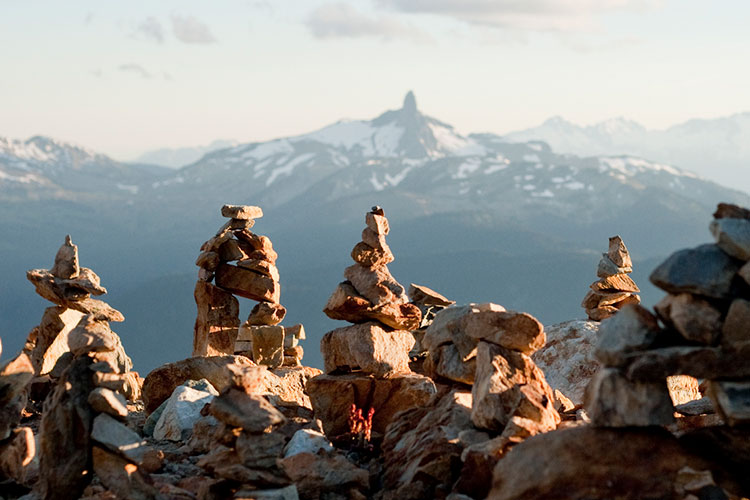
Note: Some parts of Whistler Blackcomb are in Garibaldi Provincial Park, but if you’re accessing the park via Whistler Blackcomb you do not need a separate day-use pass from BC Parks.
Hiking in the Callaghan Valley
The Callaghan Valley is raw, remote and absolutely epic. Glacial ice hangs in all directions, peaks tower overhead, and the area is full of swimmable lakes of varying sizes. For more information on hiking in Whistler Olympic Park, Madeley Lake, Cirque Lake, Conflict Lake and Ring Lake read our insider’s guide to the Callaghan Valley.

Please know that Whistler is bear country and the Callaghan Valley is an area where you may encounter them. We would advise you to be bear aware and read up on what to do if you do see one, as well as carry bear spray.
Hiking Rainbow Mountain
This mountain has hiking on literally every side. All hikes on Rainbow Mountain are full-day trips, aside from the 1.5-kilometre in-and-out trail to Rainbow Falls. Both sides offer lakes as the final destination including Rainbow Lake, Iceberg Lake, Beverly Lake and Screaming Cat Lake. Learn more about it in Insider’s Guide to the Skywalk Trail and Rainbow Mountain Hiking Trails and in this video produced by AdventureSmart BC.
Dogs are not allowed on Rainbow Mountain and check for any trail closures before you head out, as sometimes sections of this mountain are closed to negate wildlife conflicts.
Hiking Garibaldi Provincial Park
For hiking routes in Garibaldi Park read Insider’s Guide: Hike or Bike to Cheakamus Lake and Insider’s Guide: Hiking Black Tusk. Wedgemount is another option. Make sure you check BCparks.ca for information on the free day-use passes (vehicle and trail), which are required during peak hours, as well as any advisories or closures. Before you go, make sure to review the BC Parks Responsible Recreation Guide to brush up on how to recreate safely and respectfully this summer.

Whistler Half-Day Hikes
Whistler has some great half-day hikes like the Ancient Cedars Trail, Parkhurst Ghost Town Loop and the Lost Lake trail network. These are popular in the height of the summer months, so consider doing them midweek if possible.
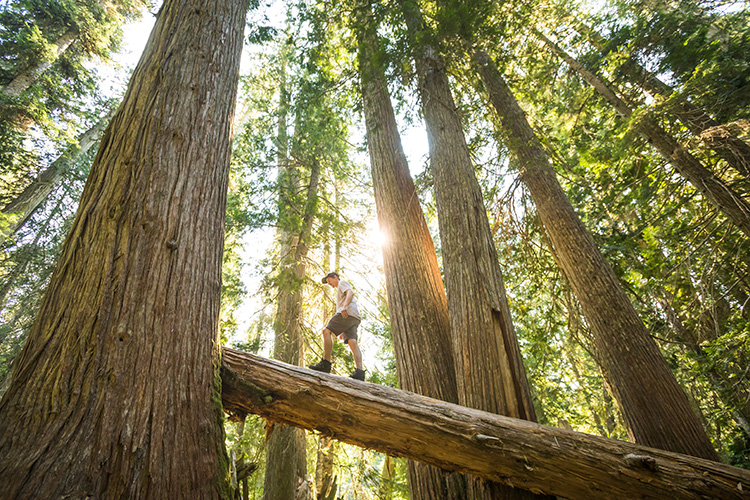
What to Take Hiking in Whistler
Be prepared for any adventure with a full phone battery, but don’t rely on service if things go wrong. Have a map (and know how to use it), tell someone your plans and your estimated return time. Be prepared and read through the hiking information on AdventureSmart.ca.
Stay within your ability. Areas like the Alpine Trail Network and Rainbow Lake provide access to stunning and remote vistas but require hikers to be both physically and mentally prepared.
Whether your outing is measured in hours or days don’t leave home without these key items. Being prepared for anything is important here in BC as varying weather and technical terrain can often surprise us.
- Flashlight, spare batteries and bulb
- Fire-marking kit such as waterproof matches / lighter and a fire starter / candle
- Signalling device such as a whistle or mirror or even better, an emergency communication device like a Spot, BivyStick, or Satellite Phone.
- Extra food and water (1 litre per person)
- Extra clothing including rain, wind, water protection and toque (hat)
- Navigation and communication aids
- First aid kit (know what’s in it and how to use it)
- Emergency shelter such as a tarp
- Pocket knife
- Sun protection; glasses, sunscreen and hat
Help Preserve Our Wild Spaces
Not only is it important that you take care of yourself, your friends and respect the new protocols when venturing on a hike in Whistler, but it is also important to care for the special places you visit.
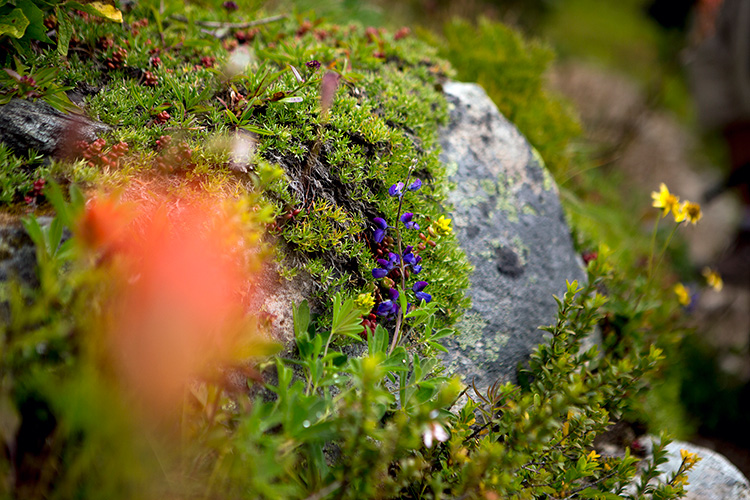
Help keep our beautiful backyard pristine by packing out all garbage, using outhouses when available and take nothing but photos. The Resort Municipality of Whistler has some helpful tips on hiking etiquette.
-
- Practice bear safety, such as managing your attractants and giving bears space
- Stay on designated trails and obey all trail signs. Avoid shortcuts and trail braiding to protect the natural habitat.
- Be aware of current fire danger ratings. Do not flick butts or matches, and where campfires are permitted, drown campfires before leaving.
- Prevent the spread of invasive species by cleaning your gear before entering and when leaving a trail area
- Protect Whistler’s water supply. Do not fish, camp or defecate in the watershed. If you’ve gotta go, dig a hole at least 60 metres from a watershed and at least 30 centimetres deep. Cover it up after use.
- Dogs are prohibited from the Sproatt and Rainbow Alpine Networks. In other areas, keep dogs on leash, as off-leash dogs can create conflict with bears and other wildlife.
If you have any questions, the Ask Whistler Live Chat Service is available seven days a week from 8 AM to 7 PM PST via Facebook Messenger, WhatsApp, SMS and phone.
Spring savings are calling! There’s so much to see and do in spring, you’ll want plenty of time for fun in the sun. Extend your stay and book midweek for increased savings, with 3 nights starting from $135 CAD per night.
For summer, book ahead and save up to 25% on lodging. Plus, you'll receive a free $100 CAD Activity Voucher on stays of 3 or more nights ($200 for 5 nights).
Insider Tip: BC or Washington resident? Sign up for Whistler Rewards to access additional savings and exclusive perks.
